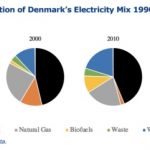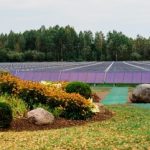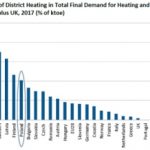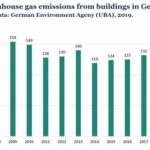The EU-funded WEDISTRICT project establishes sites to demonstrate innovative 100% fossil free heating and cooling solutions for new and existing district heating and cooling systems. But some of the sites have run into permitting problems with local authorities and stakeholders. In Poland, the project had to be withdrawn. In Spain, it had to relocate to a site in the University of Córdoba. As Khatia Shamanauri and Fintan Burke at ESCI explain, … [Read more...]
District Heating: Molten Salt boilers beat Water for storing intermittent Wind & Solar power
District heating networks, an important part of the energy transition for buildings, need a way of storing intermittent wind and solar power. But water tanks have limits: they take up a lot of space, and have a low thermal energy storage density (limited by the 100°C boiling point). Molten salts have a much higher storage density (regular table salt has a melting point of 801°C), but a melting point that is too high is not safe where ordinary … [Read more...]
A role for Coal? Low-cost, negative emissions Blue Hydrogen from “MAWGS” Coal/Biomass co-gasification
Schalk Cloete summarises his co-authored study that explains how to make hydrogen at unbeatably low prices from coal/biomass co-gasification. Though the “blue” hydrogen process creates CO2, the self-contained plant using a membrane-assisted water-gas shift (MAWGS) reactor means 100% is captured easily. Better still, the use of biomass means the plant achieves negative emissions. The overall efficiency of the process is a very impressive 69%. The … [Read more...]
Smart households in a high Renewables world: flexible, efficient, cheaper
Smart controls can enable household heating and EVs to interact flexibly with increasingly decentralised electricity generation. As renewables continue to be added to the energy mix, it will increase efficiency, reduce load, and save money. Marco Reiser and Karoline Steinbacher at Guidehouse summarise the challenges and opportunities, before looking at the SINTEG pilot in Germany. The main hurdles are technological (standardisation, interfaces, … [Read more...]
Buildings: France and Flanders lead on decarbonising new builds
Buildings are responsible for 36% of total EU carbon emissions. So, since the start of 2021 European legislation requires all new buildings to be ‘nearly zero energy’. The frontrunners are France and Flanders in Belgium, according to a new report from the Buildings Performance Institute Europe (BPIE), writes Clare Taylor. Both jurisdictions have plans for phasing out fossil fuels in new buildings within five years. Taylor explains how Flanders … [Read more...]
What is making Denmark a decarbonisation success? Policy, society, geography
Denmark is proving itself to be a decarbonisation leader, happy to turn its back on its history of oil and gas production and heavy reliance on coal. Its ambitious goal of cutting GHG emissions by 70% by 2030 makes it a global policy frontrunner, second only to Finland which aims to be climate neutral by 2035. Thibault Menu references his report for IFRI that asks what makes Denmark special. It has a long tradition of providing stability and … [Read more...]
EU Recovery funds: where is the support for District Heating?
District Heating is an efficient way to heat homes, particularly in a country like Latvia where 58% of its primary energy consumption is used for heating. But Selīna Vancāne at Riga City Council is very concerned that the draft EU Recovery plans do not include any support under the climate goals for district heating projects. Perhaps it’s because of a blind spot: most of Europe is prioritising individual heating units powered by electricity. … [Read more...]
Sweden’s new “prosumers”: electricity generation at the city, village and residential level
54% of Sweden’s power already comes from renewables – the target is 100% by 2040 - and more and more is being generated locally on a small distributed scale, says Harry Kretchmer writing for the World Economic Forum. ‘District Heating’ plants are today using excess heat to warm over 75% of Swedish homes. Residential generation is happening too, creating “prosumers” who both produce and consume. In Ludivika, 1970s flats have been retrofitted with … [Read more...]
Waste Heat Recovery can help replace Poland’s District Heating coal
Three quarters of all district heating in Poland comes from burning coal. So the country is looking for ways to reduce this. It’s why subsidies are provided for combined heat and power (CHP) plants that burn either coal, gas or biomass, which all have lower emissions. But a report by IEEFA authored by Gerard Wynn, Arjun Flora and Paolo Coghe says that waste heat recovery (WHR) – currently unsubsidised – is both emissions free and can be … [Read more...]
No Energiewende without Wärmewende: making Germany’s Heating emissions climate neutral (…nearly)
In Germany, space and water heating in buildings accounts for almost a third of total final energy consumption. Because over 90% of its 22m buildings are fuelled by oil and gas, that makes the sector emissions very intensive. The government’s ambition is to have a "nearly climate neutral building stock" by 2050. But although those emissions have fallen by 44% since 1990, progress has largely stagnated since 2011. Freja Eriksen at Clean Energy … [Read more...]











